Anybody Wanna See Second Prize? Second Prize Is A Set Of Steak Knives…..
September 30th, 2010
Continuing the lengthy look at training camp invitees league wide, here’s part two. Part one can be found here.
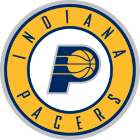 Indiana
Indiana
– View Pacers roster
– View Pacers salary information
Indiana already has 15 guaranteed contracts, so they didn’t bring in many for camp. The only two players they signed were D-League veteran centre Lance Allred, and their second second-round draft pick from this summer, Magnum Rolle. Additionally, the contracts of both A.J. Price ($175,000 of $762,195 guaranteed) and Josh McRoberts ($500,000 of $885,120) are not fully unguaranteed, although you can pretty much guarantee McBizzles is making the team since Pacers coach Jim O’Brien has already said he’s considering him at starting power forward.
Weber State graduate Allred played briefly with the Cavaliers down the stretch of the 2007/08 season, his only NBA experience thus far. Cleveland called him up on account of the 16.2 points and 10.0 rebounds he had averaged during the season for the Idaho Stampede; in the ten minutes of NBA playing time he received, Allred put up a negative PER (admittedly a far from reprehensible act in only 10 minutes). Allred has spent most of the last four seasons with the Stampede, and has not had much luck on the occasions that he’s chosen to leave. Last year, for example, Allred signed with Italian team Napoli, only for this to happen. He stayed in Italy to play four games with Scavolini Pesaro, averaging 5.3 points and 4.0 rebounds, before returning to the Stampede again and averaging 13/9. Allred, perhaps most famous for being legally deaf (although not fully deaf), signed this summer for Ukrainian team Khimik, but left there to try to make this team instead. Now aged 29, this might be his last NBA chance.
Rolle’s draft rights were acquired by the Pacers for those of Ryan Reid. He immediately impressed in summer league, averaging 13.4 points, 7.0 rebounds and 2.0 blocks, shooting 57% from the floor. The Pacers have every intention of having him on their roster, and always have. However, that’s easier said than done. Solomon Jones, signed last season with the Bi Annual Exception, occupies both Rolle’s role and Rolle’s roster spot. In all honesty, the Pacers need someone like Rolle rather badly; they ranked 29th in rebound differential last season, ahead of only the Warriors (who were last by MILES), and yet they just traded away Troy Murphy, their only good rebounder last year. Rolle – and to a lesser extent, Allred – can help to fill that void, as will the returning Jeff Foster and Tyler Hansbrough. But even though he used to be a good rebounder, Jones certainly wasn’t one last year, sporting a total rebounding percentage of only 11.6%. Starting centre Roy Hibbert is also particularly bad at it (12.4% from a 7’2 centre), and no wing players or guards chip in with any decent percentages. Therefore, sans Murphy, Indiana figures to struggle once again in the rebounding department, maybe even being the worst rebounding team in the league now that the Warriors have built a more conventional roster. It all looks good for Rolle’s chances, then. But can they be sufficiently confident in the skills and humanity of Lance Stephenson to be able to forego having A.J. Price as an inactive list point guard?
Prediction: ….Possibly, hopefully, yes. If they’re able to make a small trade to dump Solomon or Dahntay Jones, then that’s even better. (Although note that dumping either or both of them would mean that Indiana misplayed last offseason’s free agency even more than David Kahn did, and without the theft of Ricky Rubio to override it all. Will they catch as much flack? No, because Larry Bird doesn’t talk to the press like David Kahn does. And also because William Shatner never shouted “BIIIIIIIIIIRRRRRRRRD!!!!!!”.)
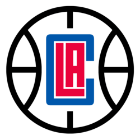 L.A. Clippers
L.A. Clippers
– View Clippers roster
– View Clippers salary information
After their free agency washout, L.A. found themselves with only 12 guaranteed contracts, one of whom was Brian Cook (the fortunate recipient of a two year guaranteed contract given to him for no obvious reason). They also still had holes in the team; no backup centre other than DeAndre Jordan, and only four guards, one of whom is a 19 year old rookie and one of whom is so out of shape that even his coach can’t help but mention it. To that end, the Clippers brought in rookies Jon Scheyer and Stephen Dennis to battle for a guard spot, along with old men Jake Voskuhl and Jarron Collins to fight at centre. They had also previously signed second-round draft pick Willie Warren ($100,000 of $500,000) and undrafted rookie Marqus Blakely ($35,000 of $473,604) to fight for camp spots, leaving six players battling for three spots at most.
As first reported by this website and re-reported around the world, Scheyer was initially going to camp with the Utah Jazz. When this did not happen, I looked a fool, but it really was going to happen; in fact, even though this was not my initial source, here’s a video of Jon Scheyer saying so himself. His mind was changed when Utah signed Earl Watson instead, essentially ending Scheyer’s chances of making that team. He’s landed in a good spot, though, a place where he’s likely very able to find minutes. Scheyer’s media day photo suggests that he’s even smaller than he was before his eye injury, and he’ll never have physical tools on his side. But he’s so efficient that he should be able to overcome that, if only in a Chris Quinn-type role.
Warren had a pretty remarkably terrible sophomore year, and then declared for the draft anyway. He was wild, shot-happy, poor defensively, stuck on a losing, imploding team, and promptly undid most of the progress he had made in his freshman season. He also got arrested. Nevertheless, he was just about drafted, and for all the damage his stock has taken in the last 12 months, there still remains the talented guard whose effective slashing ability once had him projected as a top 10 pick. Dennis is here to challenge Warren for that role of emergency slightly undersized shooting guard; while Dennis measures in at a respectable 6’6, it’s mostly neck, and he’s also incredibly lean. Dennis comes from Division II school Kutztown, for whom he averaged 26.4ppg, 5.8rpg, 4.5apg, 2.1spg and 1.2bpg last year, winning the Division II Player Of The Year award. As unproven as he is, those numbers are hugely impressive; however, without NBA calibre size or much of an outside shot, he must be considered a longshot for now.
Blakely won the American East Defensive Player of the Year award in each of the last three seasons. Last year he averaged 17.3ppg, 9.3rpg, 3.7apg, 2.4spg and 1.9bpg, shooting 54% from the field. Unfortunately, he did all this as a 6’5 power forward. And he did all this as a 6’5 power forward who shot 7% from three point range. If and when he adds a jump shot to his game, Blakely could carve out a career similar to that of Mo Evans or Michael Curry; however, as of right now, he’s still a 6’5 power forward without many ball skills. And by re-signing Rasual Butler and Craig Smith, to along with acquisitions Cook, Ryan Gomes and Al-Farouq Aminu, plus the returning Blake Griffin, Blakely might just have been squeezed out of a spot here.
Collins played with the Suns last year, doing his customary thing of neither rebounding nor scoring, just playing the intangible defence that can’t be measured statistically. This is fine in theory, although it led to rather unattractive +/- numbers, and a PER of a career low 3.8. This, however, still doesn’t touch Jake Voskuhl’s career low PER of 0.4, set in 2008/09 with the Raptors, a season in which he had 60 fouls and 35 points. Voskuhl did not play anywhere last season, and really needs to catch a second wind. He is still only 32, so one is possible; he was a reasonable enough player for many years for one to be possible. If he does not make the team, he will allegedly go to the D-League.
Prediction: Collins, Scheyer and Warren.
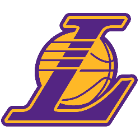 L.A. Lakers
L.A. Lakers
– View Lakers roster
– View Lakers salary information
The Lakers had signed their second-round draft picks, Devin Ebanks and Derrick Caracter, long before training camp started. Ebanks’s contract was already guaranteed, while Caracter’s, in a story originally reported by this website, became guaranteed if he weighed 275lbs or less on September 10th. (He did this emphatically; in fact, he damn near weighed 175lbs instead.) With their 14 man roster in place, a hefty payroll inevitable, and a history of never unnecessarily filling out their inactive list just for the sake of doing so, there is therefore incredibly little for anyone to play for, save for the glory and the fun of playing with the two time defending champions for a couple of weeks. It’s good for the CV and good for the soul. With that in mind, four players have done it; guards Anthony Roberson and Trey Johnson, and centres Russell Hicks and Drew Naymick.
Roberson is a veteran of several teams, including the Bulls, Grizzlies and Knicks. He’s a shooting specialist in the mold of someone like Eddie House, who really does very little else but shoot jump shots, and who doesn’t always have the best discipline as to when to do so. Playing in France with Strasbourg last season, Roberson averaged 18.5 points, 2.6 rebounds and 1.0 assists in only 28 minutes per game, taking 9 threes a game in that time and hitting hem at a 41% clip. Roberson is good at what he does, but because he only does this one thing, he is only as good as his shot selection. And that’s….intermittent.
Johnson is similarly a scoring specialist, who last year in the D-League was pressed into playing some point guard. He responded, averaging 21.3 points and 7.1 assists per game, including a 20 point 20 assist night. For a man who had never played significant point guard minutes before, this was impressive. It also earned him a call-up to Italian team Angellico Biella, for whom he averaged 11.5ppg in the final 4 games of the season. Johnson is talented and on the cusp of the NBA – he certainly has Chris Paul’s vote. But that’s why it’s perhaps surprising that he has opted to play for a team where he’s very unlikely to make the cut.
Naymick was scheduled to play with the Lakers in summer league, at which point I wrote this about him:
It has been two years since Naymick left Michigan State, and he remains their all-time blocked shots leader. In the two years he’s been going, he has played in Poland and the LEB Gold, averaging 10.6ppg/7.5.ppg/2.0bpg for Kotwica in 2008-09 and 8.8ppg/6.4rog/1.9bpg for Caceras in 2009/10. He is 6’11, pretty athletic (very much so for a ginger) and with good shot blocking skills. He can’t score outside of gimmes and the occasional 18 footer, and is very thin, but he doesn’t make mistakes and will play physically on the interior.
It is perhaps a wonder, then, why he averaged only 4/4/1.7 in his senior season.
For whatever reason, Naymick never actually played in summer league, so they’ve had to wait until now to get their extended look at him. That’s all it will be; an extended look. Even if Naymick impresses, he will not win a roster spot, because the Lakers will not spend on unnecessary, replaceable parts. That’s simply because of how big their payroll and tax bills are. The same is true of Hicks, a big shot-blocking Canadian centre formerly of Pepperdine and Florida International, whose one year professional career thus far has consisted solely of teams called “Energy” (three games for the D-League’s Iowa Energy, then a stint in the IBL with Edmonton Energy). Whatever they do, they’re not making it. They’re not beating out Theo Ratliff, and they’re not taking the superfluous 15th spot. To further that point, in any other circumstance, Tony Gaffney would have won a roster spot last season, for he did enough to win everybody over. But because the Lakers had decided they wouldn’t carry a 14th player, he didn’t. Gaffney had done everything right to win that spot; the only thing he couldn’t do was engineer a salary dump trade of Luke Walton. Because that didn’t happen, Gaffney didn’t stick. Naymick et al will face the same situation – even when the moment comes that Sasha Vujacic is paired with a first-round pick and salary dumped to a team with excess cap space, they still won’t make the team.
Prediction: None of them.
(EDIT: Roberson and Hicks have already been waived. The other two won’t be long.)
 |
| Kenny Thomas shooting a layup |
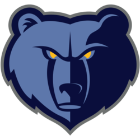 Memphis
Memphis
– View Grizzlies roster
– View Grizzlies salary information
Like many teams, Memphis are mostly set. With Xavier Henry and Greivis Vasquez finally signed, Memphis entered camp with 14 players under contract, 13 of which are guaranteed. The only one that isn’t is that of third string point guard Acie Law, who has $500,000 of $885,120 guaranteed. Memphis have at least three options at every position, and thus don’t have a lot available to any potential signings. But they played the game anyway, bringing in five players with varying amounts of NBA experience; Kenny Thomas, Tre Kelley, Damien Wilkins, Josh Davis and Luke Jackson.
Thomas had been a member of the Kings from the date of the Chris Webber trade (February 2005) until they waived him (February 2010). He used to be a big part of the team, starting in a combined 106 games in his first two full seasons after the trade. However, over the last three years, he played only 57 games combined. He played 26 in 2007/08, 8 in 2008/09, and 23 in 2009/10, combining for only 656 minutes in three calendar years. In what little time he has managed, Thomas’s production has declined beyond belief; this formerly athletic inside/outside scorer (who made 57 three pointers in his first two seasons, and then only 2 in the last ten) can now barely score the ball at all. Thomas averaged only 4.7 points per 36 minutes last year, 3.5 in 2008/09, 4.1 in 2008/09, and 8.4 in 2006/07. He retains a solid rebounding rate, but aged only 33, he seems to have lost all of his ability to both score and defend. Memphis are more than entitled to see if he can do anything about their comparatively weak backup power forward rotation, yet until further notice, Thomas is done.
Davis has signed contracts with seven different franchises before now; Chicago, Phoenix, Houston, Milwaukee, Indiana, Philadelphia and Atlanta. He has also played in summer leagues with Denver, Orlando, Portland, Minnesota and New Jersey – pretty much every NBA executive of the last 7 years has had a look at Josh Davis by this time. He didn’t play regular season games for all of those teams, but he’s managed 368 NBA minutes; 328 of them with Philadelphia, and 40 split between the Bucks, Rockets, Hawks and Suns. When Davis left Wyoming in 2002, he wasn’t a good outside shooting, but now it has become his main weapon. Davis can get open for shots on both the interior and the perimeter, and makes a good amount of both; he’ll also rebound well and try his best on defence. Problematically, however, he’s just not athletic. Last year for Greek team Panellinios, Davis averaged 6.7 points and 4.4 rebounds in the A1 league while struggling with injuries; now aged 30, Davis doesn’t seem like a strong candidate to make the roster. He had a lot of troubles doing so when he was only 25.
Jackson has had many, many opportunities to succeed in the NBA so far, but has failed in them all, partly due to injury and partly due to circumstance. In all these years, Luke has managed only 73 NBA games, the most recent of which came in 2007-08, when he was a midseason pick-up on that absolutely horrific Miami team that was making no attempt to win. Jackson spent the 2008-09 season in the D-League, hoping for a return, and then spent last year in Italy, averaging 15.1 points and 5.3 rebounds for Carife Ferrara. He turns 29 in six weeks, and this might be his last chance. He does have one, though.
Kelley is a former USC point guard and camp veteran, a former member of the Thunder and Heat for very brief periods of time who has yet to play in the NBA. He is a scoring guard whose best asset is his speed, yet whose biggest problem is his size. At 6’0 and 185lbs, Kelley is a crafty and adept slasher, combined with a solid outside jump shot and capable of explosively high scoring nights. But at the NBA level, he is truly lacking for size.
Wilkins is perhaps the best player of the bunch, a decent NBA player as recently as last year. Playing for the Timberwolves – the team who initially signed him to that 5 year contract back in the McHale era – Wilkins averaged 5.6 points, 3.1 rebounds and 1.7 assists in 20 minutes per game, playing on a bad team insistent upon a lot of triangle offence with a load of players who didn’t know how to run it. Nothing about those numbers is stand-outy, nor does Wilkins shine in any facet of the game when given the eye test. But he’s solid. Wilkins does absolutely nothing attractively, not being a great athlete, not being a great ball handler, not being a good shooter, and prone to mistakes. But he’s good at most things, is versatile both defensively and offensively, and does just enough. (He even scored 40 points once. A bit of a fluke, yet fun nonetheless.) He’s never advanced beyond being an ordinary NBA player, and he never will do, but that’s enough. There will be about 70 players in the NBA next year that are worse than that. There always are.
Prediction: Assume that Law is in; too much of his contract is guaranteed for him to be cut now. He’s at least free until January, so he may as well be kept until then. His presence precludes that of Kelley; with Vasquez, Law and Mike Conley all signed at point guard, plus some time lined up there for O.J. Mayo, there’s no more point guard minutes for Kelley to taKe. From the remaining five, the best player on the list is Wilkins, but the players who play the position of need are Davis and Thomas. And since Kenny Thomas has been done for a while, and Josh Davis was only ever a marginal NBA talent, I will assume no one makes it.
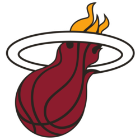 Miami
Miami
– View Heat roster
– View Heat salary information
Miami’s camp signings have basically nothing to play for. After assembling their core three, and finagling their way into good contracts for Mike Miller, Udonis Haslem and Joel Anthony, Miami used the minimum salary exception in the spirit it was intended and packed out their roster with veterans. They now have fifteen players with guaranteed contracts for the 2010/11 season, and thus have little room for training camp battles. Nevertheless, after signing their second-round draft pick Da’Sean Butler to a deal, and re-signing last year’s inactive listers Shavlik Randolph and Kenny Hasbrouck to deals that both have $250,000 in guaranteed money, Miami then also saw fit to bring in D-League big man Mickell Gladness and St John’s forward Anthony Mason Jr, bringing their roster up to the maximum of 20.
Why Randolph and Hasbrouck have been brought back, and with such a large amount of guaranteed money, is not clear. Both were on the team for the end of last season, yet Hasbrouck didn’t play a minute with the team, and Randolph played only 3 games. Both are decent players; Randolph in particular is a good energy with a mid-range jump shot who sticks around in the NBA for a reason. Yet neither is going to make the team, and so the money Miami gave them just seems excessive. Them being here for a combined five weeks for a combined cost of half a million dollars is essentially the basketball equivalent of making it rain. Slightly overzealous spending by some rather generous and highly satisfied executives, maybe. But good luck to them.
Butler is a good all-around player with terrible all-around luck. A good slasher, ball handler, shooter, passer and creator, who played all spots from 1-4 for West Virginia at times, Butler tore his ACL in his last game for the Mountaineers that hurt his stock. He slid to the middle of the second round, where Miami picked him up regardless of the injury, only for him to now join a team that frankly hasn’t the room or the time for carrying many young players. When healthy, Butler is good enough to play in the NBA, and it will help his slim chances that he plays the position at which Miami currently has its least number of possible options. Unfortunately, one of those options is LeBron James; how many options do you need behind him?
Mason Jr – better known as “Yung Mase,” where dropping the O makes it cooler – averaged 14.0 points per game for St John’s in his junior season. However, he then got injured after only three games of his senior season, and took a medical redshirt; he returned last season at half speed, averaging only 7.0 points per game in 19 contests. This killed whatever draft stock he had, and it was no surprise to anyone when Mase went undrafted. When he was at his best, Mason was more athletic than his old man, a 6’7 combo forward with good athleticism and decent defence, but with high turnovers, bad shot selection, and a mediocre outside shot. The hampered Mason took far less shots in whatever senior season he had, yet he was just as inefficient. Mason’s best bet would be to go to the D-League, get healthy, and try to earn a call-up the Renaldo Major way. That, in fact, is probably why he’s here.
Gladness became relevant in 2006/07, when, in his second season at Southwestern Atlantic Conference team Alabama State, he averaged 7.6 points, 7.6 rebounds and a whopping 6.3 blocks per game. Included in that was an NCAA record 15 blocks in a game against Texas Southern; even if it was the only thing he did, Gladness did this one thing so well that everyone had to pay attention. He then put up 10/9/5 as a senior, before spending his first professional season in Holland, averaging 3 points and 4 rebounds for Nijmegen. Gladness spent last year in the D-League, but played only 11.8 minutes per game, averaging 3.9 points, 3.0 rebounds and 1.2 blocks per game. His height, wingspan and athleticism are his virtues – while most people have wingspans roughly equal to their height, Gladness uniquely has each arm roughly equal to his height, making for a total wingspan of 14 foot 6 inches. But while this arm length is his greatest virtue, it’s also his weakness, because those arms are damn thin. The same is true of his legs (not pictured). At this time, Gladness can’t handle the physical play of the D-League, let alone the NBA. He will always be thin, but at this moment in time, he’s Mikki-Moore-on-Rimonabant-level thin. He’s also not a particularly good offensive player, save for the easy ones that avail any athletic 6’11 player. Maybe these things never change. Either way, Gladness is not ready for the NBA, and Miami knows that too.
Prediction: Mason and Gladness are here for D-League assignment purposes. They are not ready for the NBA, and may never be. Additionally, Dexter Pittman’s contract is guaranteed. So is that of Patrick Beverley; in fact, Beverley’s has two guaranteed years. Miami didn’t sign those guys to those contracts just to cut them – this is particularly true in the case of Beverley, whom Miami traded a future pick to acquire. Neither is immune to being cut or traded, but there seems little point in cutting either. Therefore, since Randolph and Hasbrouck don’t seem to offer anything that those two cannot do, their futures look brief. (If and when Hasbrouck is waived, he will have earned over a quarter of a million dollars to not play a single minutes for the Heat. Lucky bugger.) As for Butler, he plays a position of need more than either of Beverley or Pittman, yet there just doesn’t seem to be the room for him right now. It’s possible that they could eat the salary of Pittman, the seventh big man, in order to keep the injured Butler, or maybe even that of Juwan Howard. Yet this is also the only plausible way that Da’Sean makes it, barring an unlikely trade. And a trade isn’t likely.
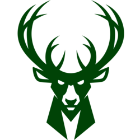 Milwaukee
Milwaukee
– View Bucks roster
– View Bucks salary information
In addition to signing their two second rounders – Tiny Gallon and Butta Hobson – Milwaukee brought in four more players. Billy Rush, Tory Jackson and Chris Kramer have all signed their first professional contracts, whilst veteran Brian Skinner returns to the Bucks for his third run with the team. He never writes, he never calls, and that’s why they’ll never truly love him, but dammit, they can’t deny how they feel. (Note: Luc Richard Mbah A Moute also has an unguaranteed contract, but that’s a mere technicality. He’s staying.)
Kramer has worked out for many teams this summer, and went to summer league with the Pacers, where he totalled 32 minutes, 8 points, 6 rebounds and 7 fouls in 2 games. At that time, I wrote this about him:
Kramer is an extremely strong 6’3 defensive specialist with no discernible offensive talent whatsoever, who really should have played football instead. He was a great fit for a big program in the college game, but he’ll be far less great in the professional arena, where the players get harder to defend. It would be a great thing for the fan’s perspective to see him do well, for the Purdue graduate is a local boy, but unfortunately, Kramer is let down by his own face. He’s just too good looking for me to root for anything other than his abject failure.
His problem, succinctly yet fairly, is that he can’t make a shot. Kramer is tough, smart, gritty, strong, defensively aggressive and defensively tenacious, but offensively, he can’t dribble, shoot, create or pass. Kramer has not got a good set jump shot, can do nothing off the dribble, can’t finish around the basket, and can’t get there either. He averaged only 6.5 points, and while he again does the little things well – moves the ball, makes the extra passes, only took good shots, shot a good percentage – he also can’t contribute the big things. Is there room in the NBA for a player like that? Yes, always, but not when they’re 6’3.
Jackson, meanwhile, needs to prove he can be a good quality player without Skillz Train to accompany him. Jackson is a pass first point guard who was always particularly adept at finding Harangody open on the baselines – the two made each other better. Jackson’s assist numbers are high, and his turnover numbers low; he’ll be a pure point guard candidate on a team with a pure point guard coach who really did love Chris Duhon once upon a time. Unfortunately, Jackson doesn’t have Duhon’s defence nor his size; measuring in at only 5’11, Jackson has good hands and tries hard defensively, but is forever severely disadvantaged by his size. He’s also not a good shooter from any area, which is one too many flaws to overcome.
Rush is one of the biggest unknowns there is. There’s no video of him, scant little coverage, and only really one picture;

Billy comes from Robert Morris; not the Northeast Conference school from Pennsylvania, but the NAIA school from Illinois that also gave birth to Othyus Jeffers. Rush wasn’t even the scoring leader at Robert Morris, his 16.1ppg trailing someone called Robert Jones for that crown. But he did grab 7.7 rebounds per game, good for second on the team, and also shot 41% from three point range while taking more threes than twos. Milwaukee worked out Rush before the draft – I think they were the only team that did – and they clearly liked what they saw. As a 6’7 wing player with athleticism and an outside jump shot, you can see why.
Just when I thought Skinner wasn’t going to get signed, Milwaukee snuck in there and signed him a couple of days after camp broke. Last year was easily the worst of Skinner’s career; he played only 123 minutes, and fouled once in every six of those. He’s been productive for over a decade, but now aged 34, he’s probably ran out of steam.
Prediction: Baha Mootay is an obvious lock; the lack of guarantee on his minimum salary was predetermined two summers ago and has no bearing on his current standing within the team. As much as Scott Skiles might fall in love with Chris Kramer – despite Kramer’s status as a worse version of the already questionable Mario West – there’s no room for him. The same is true of Rush and Jackson, even if they were to show the kind of NBA talent that they so far haven’t. This leaves Gallon, who unfortunately is the 16th man on a 15 man roster. There seems to be no incentive to keep him over Darington Hobson; in the unlikely event that Erick Dampier signs with the Bucks, there doesn’t seem to be the incentive to keep either. So the likelihood is that none of the four non-draftees makes it, while only Hobson does from the draftees. If Hobson ($190,000 guaranteed) and Gallon (fully unguaranteed) both don’t make it, then Milwaukee will have returned 0 games played from three second-round picks. And that would be a mistake.
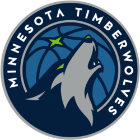 Minnesota
Minnesota
– View Timberwolves roster
– View Timberwolves salary information
Only really needing a two guard, Minnesota brought in two of them with a combined 11 years of NBA experience; Maurice Ager and DerMarr Johnson. They also brought in two players with a combined 67 years of age, both of whom have played with the team before; centre John Thomas and point guard Jason Hart.
Hart went to camp with Minnesota last season, along with five other players, all battling for just one roster spot. Current Spur Alonzo Gee was one of them, yet he and the others had to watch as Hart won the spot and made the team. Jason didn’t stay long, as Minnesota used his unguaranteed contract to acquire Alando Tucker from Phoenix, and after Phoenix instantly waived Hart, he played on a ten day contract with New Orleans, and then didn’t play for the remainder of the season. Hart is a veteran point guard, a sterotype which brings with it obvious connotations – steadiness, determination, high IQ, heart, graft, intangibles, fundamental defence, and extremely marginal talent. These aren’t necessarily meant as pejoratives.
Ager has been covered a few times this summer, the most in-depth of which was here. He was reportedly going to go to camp with the Knicks, yet may have chosen more wisely in coming to New Orleans, who need a two guard more than New York does. DerMarr Johnson is fighting for that same spot; he hasn’t been in the NBA since the end of the 2008 season, and has spent much of his time since on Twitter (where all he does is talk about how he’s trying to bed every woman in Denver. It grows tiresome.) Johnson played this spring in Saudi Arabia of all places, where he averaged 22.3ppg, 6.7rpg, 3.6apg, 2.3spg and 1.4bpg in the Asian Club Championships for Al Hilal. Before that, he played briefly in China and Puerto Rico. All three are stat-heavy places that aren’t even close to replicating the calibre of NBA play. Always a marginal talent, save for one good year, DerMarr will have to go some to win this spot.
Finally, John Thomas may have five years of NBA experience, but he’s also 35 years old. He hasn’t played in the NBA for five years, and in the five years he has played in the NBA, he was not good. Thomas is not a scorer (8.9pp36m for his career), nor a rebounder (6.9rp36m career), nor a shot-blocker (0.8bp36m) or a passer (1.0ap36m), and his defence is hampered by the constant threat of the foul (6.1fp36m). He’s not a jump shooter, he’s not a foul shooter, and he’s only 6’9 while playing the centre spot. What he is is a hard arse, an aggressive post defender and a monster of a man, who might not produce much on an NBA court but who is a seriously good practice player. That’s why he’s here; once training camp starts, you can’t practice unless you have a contract. Thomas is here to provide tough, physical, fearless play on the interior, to be a coach’s favourite and an opponent’s nuisance that will help the team prepare for the season. However, while it’s a genuine virtue that has got him to this point after such a lengthy hiatus, it’s also what means he won’t be here long. And perhaps the biggest thing working against John Thomas is the fact that in my country, his name is a slang term for “penis,” as ably demonstrated by Eric Idle in the following video.
That’s unfortunate.
Prediction: DerMarr Johnson proved a long time ago that being an athletic 6’9 shooting guard is only an asset if you do something with it. DerMarr never did, showing himself only to be a jump shooting specialist who’s only average at jump shooting. (You might also want to keep him away from his similarly heighted namesake, Wesley, who is a bit too similar offensively to DerMarr for comfort.) Mo Ager has had a truly terrible professional career so far, and is unlikely to prove in two weeks that he’s got the kind of talents he’s been missing for three years. He ought really go to the D-League and start afresh. Hart won’t have a role on this team until Sebastian Telfair is traded, which might not happen quickly if at all. And Thomas’s presence is a token gesture. He may have once defied the odds when he returned to the NBA in 2004 after a four year absence, but he wasn’t much of a player then, and he’s definitely not going to be one now at 35. He’s a good player to have in practice, yet it won’t be enough for him to make the team. Thus, I predict none of them will.
(EDIT: DerMarr has been waived. Three to go.)
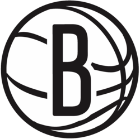 New Jersey
New Jersey
– View Nets roster
– View Nets salary information
Straight after the draft, on the first possible day, the Nets signed Tulsa guard Ben Uzoh and Duke centre Brian Zoubek. Uzoh has $35,000 of his $473,604 contract guaranteed, and Zoubek has $50,000 guaranteed. The Nets also brought in some veterans; Joe Smith, Eddie Gill and Andre Brown. Brown has already been cut, so the other four are fighting for a maximum of two spots. (Stephen Graham could also still be cut, but it’s unlikely.)
This marks the seventh time Gill has been acquired by the Nets. They first signed him to two ten day contracts at the end of the 2000-01 season, then re-acquired him on draft night 2004 as a part of the trade of Viktor Khryapa’s drafts rights (waiving him two weeks later). They then brought him in for training camp in 2007, cut him before the season started, but brought him back two weeks later, and then also brought him in for training camp in 2008 as well. After a brief two year gap, absence made the heart grow fonder, and Gill is back for his seventh stint with the team he’s somehow only played 301 minutes for. Gill played last season in Belgium, averaging 7.0 points, 3.8 rebounds, 4.3 assists and 2.2 steals, ranking second in the league in both assists and steals. Unfortunately, he also shot only 28% for the year, from both two point range and three point range, going 2 for his last 37 over the last month of the season. He will battle Uzoh for the third point guard spot, a role which became necessary after Courtney Lee was traded to Houston. However, Uzoh – who was broken down here, along with Zoobs – should have the inside track on the spot, because of his skills, his upside, and his guaranteed compensation.
Smiling Joe is fresh from the worst season of his career, when he played only 592 minutes and shot less than 40% for the Hawks. Worryingly, it was also the season in which he passed the 1,000 regular season games mark, not good for a man with a history of knee problems. There’s a possibility that this was a blip, but it’s more likely to be a worrying sign of an irreversible decline, considering his age (35).
Prediction: Uzoh’s only competition for the third point guard spot is Gill, and Uzoh is helped by being younger, cheaper, guaranteed more money, and better. So he should win that. (If The Thrill gets cut, there’s always next year. Eighth time lucky.) Meanwhile, New Jersey’s excess of power forwards (for now) coincides with a lack of depth at centre, where only Zoobs and Johan Petro (or an out of position Kris Humphries) can back up Brook Lopez. Smith and Graham are both good enough for roster spots, despite the competition ahead of them; however, it’s impossible to know what that competition ahead of them will actually be until this Carmelo Anthony trade is (or isn’t) finalised. If no trade happens, I predict Zoubek makes it and Smith doesn’t – if Derrick Favors and/or Troy Murphy is traded out, I’m predicting both make it. Whatever happens, though, Andre Brown hasn’t made it.
 |
| D.J. Strawberry, girls, and a cowboy hat. Something for everyone there. |
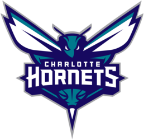 New Orleans
New Orleans
– View Hornets roster
– View Hornets salary information
New Orleans have made three trades this offseason, and have lost all three. They’ve gone from Darren Collison, Cole Aldrich, James Posey, Morris Peterson and Darius Songaila, to Trevor Ariza, Quincy Pondexter, Willie Green and Jason Smith. Despite all the dead weight salary there, the first group is distinctly better. Nevertheless, they’ve at least made some good free agency signings, bringing in D.J. Strawberry, Darryl Watkins, Pops Mensah-Bonsu, Mustafa Shakur and Joe Alexander to fill out their roster. (They also intended to bring in Arkansas big man Michael Washington, an athletic big man who has lost about 70% of his athleticism. But Washington failed his physical and the move did not go through.)
Pops initially signed for this season with Spanish team Caja Laboral, but was released after they detected some scar tissue in his knee during his preseason physical. That scar tissue has been there since a knee operation Pops had during his George Washington days, and it hasn’t prevented him from being as athletic and productive as he’s been in his professional career. Yet it scared off Caja Laboral anyway, and New Orleans swooped in to get this possible contributor. Pops makes a series of excruciatingly dumb plays in every game, yet he also makes a series of good ones. He rebounds, runs, scores through hustle and defends through hustle. For what he provides, it’s worth putting up with the occasional wing isolation possession that results in him dribbling off his foot.
Shakur has yet to play in the NBA, but is technically a two year veteran after brief stints with the Kings and Thunder. Watkins can do slightly better than that, boasting a total of 71 minutes played with the Kings back in the 2007/08 season. New Orleans needs some backup size and some interior defence, which Watkins provides. He is not much of an offensive player, but rebounds and blocks shots in the way you want your centre to do. Unfortunately for Darryl, he missed all of last season through injury, which has killed his stock somewhat. Meanwhile, Shakur has great athleticism, speed and ball handling skills, and compliments a good driving game with good enough jump shooting, half court point guard play and defence. He’s someone who has just needed a chance, and this time, he might just have found one.
Alexander’s NBA career thus far may as well not have happened. Save for a dunk contest campaign, he’s done nothing of note. Last year, for example, he made precisely one shot. That said, despite the lack of production, the fact he was drafted above Brook Lopez, the alleged internal suspension in his rookie year for a biblical relationship with a cheerleader, and the general stench of failure surrounding his career so far, he’s not THIS bad. Alexander could, and should, be a contributor somewhere, and he’s only 23. There’s still potential there.
Strawberry spent his first professional season in the NBA, playing in 39 games with the Suns in 2007/08. The two years hence have been spent in Italy and the D-League, the latter of which saw him averaging 13.7 point and 5.5 assists per game last year for the Reno Bighorns. Those decent if underwhelming numbers don’t do justice to Strawberry’s good defensive play at both guard spots, and his decent slashing ability – however, they’re also not really call-up calibre numbers from a D-League player. In Strawberry’s defence, he didn’t start a single game, coming off the bench behind Will Blalock and Desmon Farmer in every one. If he returns to the D-League next year and starts, this will help his numbers (and thus his call-up chances) considerably. With the Hornets, he has a chance to stick anyway, as does Shakur. However, the late signing of Jannero Pargo may have closed the door on either or both of them.
Prediction: The Songaila/Craig Brackins trade, in all its pointlessness, opened up a need for a power forward. Unless they’re going to put Jason Smith, Peja Stojakovic or Quincy Pondexter there, New Orleans don’t currently have one. Pops is one, and Joe Alexander could be one. Those two therefore have a chance. Watkins hasn’t done enough in his professional career to win a spot right now, and Shakur is both better and more of a point guard than Strawberry. So, barring a trade, give me him, Pops and Joe. (I assuming Pargo is guaranteed a place.)
By the way, if Chris Paul has his way and New Orleans make a push for Carmelo Anthony, wouldn’t it have been nice to have had Craig Brackins as a part of that package?
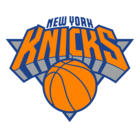 New York
New York
– View Knicks roster
– View Knicks salary information
New York have had a productive if anti-climactic summer, and their series of decent-if-relatively-underwhelming moves have left them with a pretty full roster. After signing their second-round picks and failing to get Moody Fernandez, the Knicks roster stood at 14 players with depth at all positions. Without much to play for, therefore, the team brought in only two players for training camp; forwards Patrick Ewing Jr and Shawne Williams
In keeping with the Anthony Mason Jr thing above, here’s some more nepotism. This is Ewing Jr’s third time with the Knicks; he was traded to the team in time for training camp 2008, and was also with them for summer leagues in both 2009 and 2010. Ewing didn’t play last year due to injury, which leaves him in the awkward situation of being a 26 year old athlete recovering a significant injury, with next to no professional experience (29 games in the D-League only), and still with underdeveloped ball skills. There’s still productivity there, but this must be the season he gets it underway.
Williams is here because Knicks president Donnie Walsh is the one who brought him into this world. It was he who drafted him back in 2006, he who saw more in him than anyone else. Therefore, it stands to reason that he’s the one who wants more out of Williams than anyone else; many others have already had enough. In the last four years, Williams has been arrested many times, fallen way out of shape, barely played, played badly, not improved, and been cut for being a cancerous presence when he wasn’t even with the team in question. While he showed talent in his Memphis days, it was more potential than actual production, potential which he’s done nothing with since. Shawne has reportedly lost a ton of weight in anticipation of this comeback attempt, which is a start, yet he may have already burned his final bridge. He was never good enough to get away with all this.
Prediction: These two players are best at small forward. Unfortunately, so are Danilo Gallinari and Wilson Chandler. Bill Walker also plays that position, and Kelenna Azubuike is best there too, despite a slight size disadvantage. All can fluctuate between a couple of positions, yet all will also have to. Landry Fields is there for the mop-up minutes. There’s no need, then, for these other two. There’s an open roster spot, which makes it a possibility, yet there’s not much to gain. The Knicks could very much use an insurance third string point guard, since neither Andy Rautins nor Roger Mason is that player. But unless something changes, they’re going to have to be.















